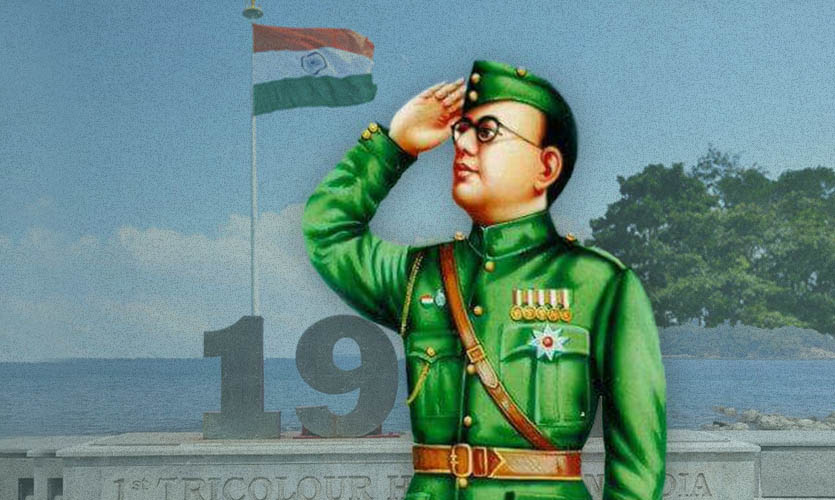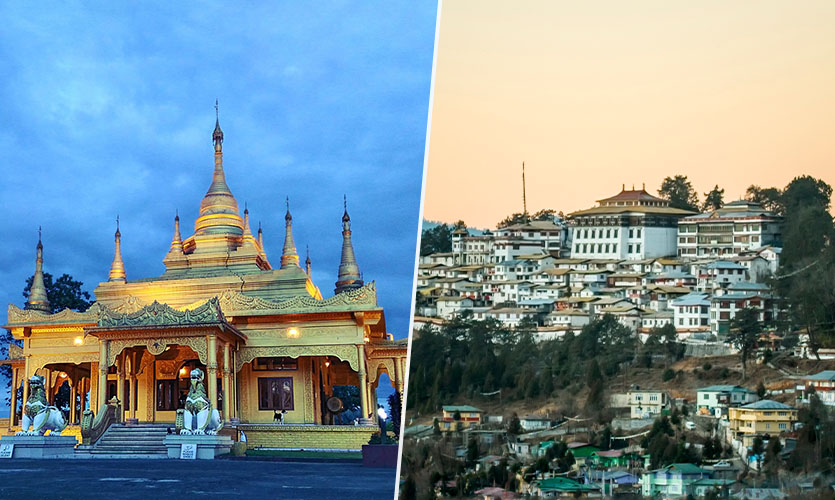December 30 is a date etched in history, as we remember how on this day in 1943, Netaji Subhas Chandra Bose hoisted the country’s tricolour flag for the first time on Indian soil in Port Blair, declaring it as the first Indian territory free from the British Raj.
The freedom of the Andaman and Nicobar Islands caused a domino effect, leading to similar protests for freedom and resistance against the British crown. But it did not happen overnight.
Bose had travelled across seas to evoke nationalism in a troubled India. With his charismatic leadership, Netaji had revived the Indian National Army (Azad Hind Fauj) to push for swaraj, and led the Bose Brigade to fight Britain’s oppression.
World War II: One’s Garbage Is Another’s Treasure
When World War II erupted in 1939 and Germany and Great Britain went to war, Netaji saw it as an opportunity to secure India’s independence. After being turned down by Nazi Germany, fortunately enough, Rash Behari Bose called him to Japan, and made Netaji commander of the INA.
At the time when the war was at its peak and Britain had just lost Singapore to Japan, the Japanese decided to add fuel to the fire. Taking advantage of the uprising in India, Major Fujiwara of the Imperial Japanese Army called to form the Azad Hind Fauj. The Fauj was first formed under Captain Mohan Singh, but soon revived by Netaji in 1943. The Azad Hind Fauj became a patriotic expression outside the country’s frontiers. He formed the “Provisional Government of Free India” to back the Fauj with political legitimacy. The strength of the army rose to 40,000 soldiers, and it successfully became the military arm of the ‘government-in-exile’.
Netaji collaborated with the Japanese and led them in Arakan, Burma (now Myanmar) in January-February 1944, and in Imphal, Manipur in March 1944, to make a dent on the British army and to eventually liberate India. It was revolutionary to witness an army formed on a foreign soil valiantly fighting for independence.
Even though the Japanese army was forced to fall back after their defeat in the northeast, Japan had a strong hold on the Andaman and Nicobar islands until 1945, when they surrendered.
The Japanese had set foot in Port Blair in March 1942, immediately following the surrender of Rangoon. The Japanese occupation coincided with the INA’s, however, both worked out a peaceful way to collaborate and achieve their goals on the island. The local troops showed little resistance when they enrolled Indian soldiers in the INA. However, things quickly went south.
In reality, Netaji Subhas Chandra Bose’s Indian National Army, which served as the country’s liberation force, only had authority over the Andaman Islands. It had relatively minimal control over the islands. In essence, his army was defeated by Japanese forces who ruled the islands with such brutality that the locals came to despise both the Japanese and the INA.
Unfurling The Tricolour At Port Blair
Japan eventually handed over the Andaman and Nicobar Islands to India on November 6, 1943, at the Greater East Asia Conference held in Tokyo. The islands were accorded to Netaji Subhash Chandra Bose’s government, which declared:
“Like the Bastille in Paris, which was liberated first in the French Revolution, setting free political prisoners, the Andamans, where our patriots suffered much, is the first to be liberated in India’s fight for independence… we have renamed Andamans as ‘Shaheed,’ in memory of the martyrs; the Nicobar – ‘Swaraj.’”
In December 1943, Netaji travelled to Port Blair to raise the tricolour, and officially assumed control of the islands. He renamed the Nicobars and Andamans “Swaraj Dweep ” and “Shahid Dweep,” respectively.
He held good on his promise of setting foot on Indian soil by the end of the year, and paid a heartfelt tribute to the sacrifices of the imprisoned revolutionaries in Cellular Jail on Andaman Island.
The INA thus emerged as a nationalist symbol that could no longer be entrusted as the chief instrument of British administration. After WWII, the balance of power was disturbed and the hold of the British on India weakened. Protests, demonstrations and hartals happened all across India, broadcasting only the message that Indians would no longer tolerate the British Raj’s oppression.
On August 15, 1947, India became a free land. All the sacrifices, peace movements and revolts against the British, finally turned fruitful. A significant part of it was also Netaji’s contribution to the freedom of the Andaman and Nicobar Islands, and his leadership of the Indian National Army.
As a tribute to Netaji Subhas Chandra Bose, in 2018, Prime Minister Narendra Modi renamed the three islands of the Andaman and Nicobar archipelago. The Ross Island was renamed as Netaji Subhas Chandra Bose Dweep, the Neil Island as Shaheed Dweep, and the Havelock Island as Swaraj Dweep. This move revived the history of the place, along with the story of Netaji’s fight for freedom.
This is a lesser known episode in Indian history, which is lost from our textbooks. The first step towards marking our independence and unfurling of the tiranga will forever be a special day to be commemorated, along with the valour of Netaji Subhas Chandra Bose.
Read more: A Glimpse Beneath The Saintly Glory Of The ‘Mahatma’: The Unpopular Opinion On Gandhi










